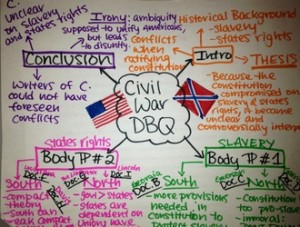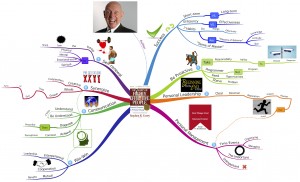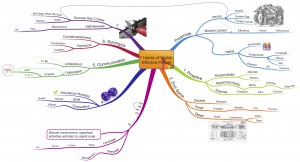An Idea Mapping Success Blogs Weblog
Idea Maps 453-454 from Red Deer College Electrical Apprentice Students
22 Feb 2014 Author: Jamie Nast In: Idea Mapping Example, Mind Mapping Examples, Studying for Exams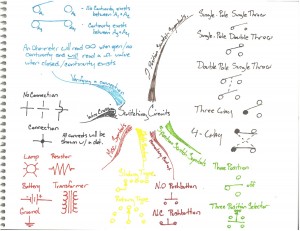
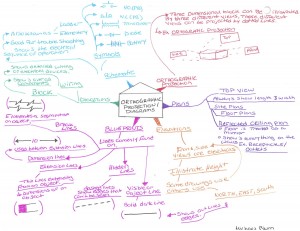 These idea maps are the third set from instructor Scott Letwin’s students (Wagoner & Blum) who just completed their first semester of an Electrical Apprenticeship at Red Deer College in Alberta, Canada. Wagoner’s idea map was on the topic of Switching Circuits and Blum’s idea map was about Orthographic Projection & Diagrams.
These idea maps are the third set from instructor Scott Letwin’s students (Wagoner & Blum) who just completed their first semester of an Electrical Apprenticeship at Red Deer College in Alberta, Canada. Wagoner’s idea map was on the topic of Switching Circuits and Blum’s idea map was about Orthographic Projection & Diagrams.
I first introduced Scott in my December 4, 2013 posting as he was preparing to attend my 2-day Idea Mapping Workshop in Palm Beach, FL. My January 2, 2014 posting provides the background on Letwin’s highly successful approach with his apprenticeship students.
Scott’s full story is featured in the January 2014 Using Mind Maps Magazine and available at the AppStore.
Biggerplate Unplugged San Francisco: 48-Hour Promo Code
10 Feb 2014 Author: Jamie Nast In: Idea Mapping Conference Events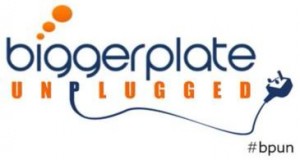 Use JAMIE48HOUR as a promo code until Wednesday at midnight and you can register at the $59 early bird rate. Register at Biggerplate Unplugged – The Mind Map Conference for the March 20, 2014 event which will be held at the Sheraton Fisherman’s Wharf. I am honored to be joining the speaker line-up for this inaugural event in the USA.
Use JAMIE48HOUR as a promo code until Wednesday at midnight and you can register at the $59 early bird rate. Register at Biggerplate Unplugged – The Mind Map Conference for the March 20, 2014 event which will be held at the Sheraton Fisherman’s Wharf. I am honored to be joining the speaker line-up for this inaugural event in the USA.
Idea Map 452 – Big Data Marketing Book Takeaways
10 Feb 2014 Author: Jamie Nast In: Books, Idea Mapping Example, Mind Mapping Examples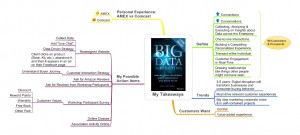 I recently read Lisa Arthur’s Big Data Marketing Book. This idea map summarizes my takeaways from her book which revealed some areas of my business that need to be addressed. Highly recommend this book.
I recently read Lisa Arthur’s Big Data Marketing Book. This idea map summarizes my takeaways from her book which revealed some areas of my business that need to be addressed. Highly recommend this book.
Jamie Nast Joins Speaker Line-up For Biggerplate Unplugged San Francisco
7 Feb 2014 Author: Jamie Nast In: Idea Mapping Conference Events On March 20, 2014 Biggerplate Unplugged – The Mind Map Conference is happening in the USA for the first time. I am honored to be joining the speaker line-up for this inaugural event. I’ve been a Gold Partner with Biggerplate for two years, but this is my first opportunity to work with Founder Liam Hughes from the UK.
On March 20, 2014 Biggerplate Unplugged – The Mind Map Conference is happening in the USA for the first time. I am honored to be joining the speaker line-up for this inaugural event. I’ve been a Gold Partner with Biggerplate for two years, but this is my first opportunity to work with Founder Liam Hughes from the UK.
Biggerplate has one simple goal: To be the best source of mind mapping content and community in the world. As of today Biggerplate has 61,991 members and those members have viewed 6,300,661 mind maps. I’m looking forward to seeing old friends and meeting new ones at this event. I’m sure it will be a great time of learning and connecting for all in attendance.
Idea Maps 450-451. High School Students Learn Idea Mapping or Mind Mapping.
6 Feb 2014 Author: Jamie Nast In: Idea Mapping Example, Mind Mapping Examples Introducing Daniel Weinstein who teaches AP Language for juniors and Creative Writing for seniors at Great Neck South High School in Great Neck, NY.
Introducing Daniel Weinstein who teaches AP Language for juniors and Creative Writing for seniors at Great Neck South High School in Great Neck, NY.
Daniel was first exposed to mind maps in the summer of 2001 at the Massachusetts College of Liberal Arts. A classmate caught his eye when she brought a set of markers to class and took notes in a colorful, creative style he’d never before seen. He was captivated by her notes, and enjoyed watching how she created her unique and artistic notebook.
After he completely transformed his note-taking, he knew he had to teach his students what he had learned. In fact, he took a vow: “I will teach mind maps to every student I ever teach.” … and Daniel has done just that!
Here are two examples from his students. The first one is from a student who is using this method to organize a “DBQ” (Document Based Question) essay for her social studies classes. The second is one of Daniel’s personal favorites — A student mapped everything they learned in his Creative Writing course. See more of his students’ examples at his website The Creativity Core.
Daniel’s full story is featured in the February 2014 edition of Using Mind Maps Magazine available at the AppStore.
Idea Map 449 – How To Get Your Money Back From Big Companies
18 Jan 2014 Author: Jamie Nast In: Idea Mapping Example, Writing a Book Jim Lauria recently used Mind Mapping or (Idea Mapping) to help him publish an eBook titled How to Get Your Money Back From Big Companies — a guide to getting consumers restitution for botched customer service and defective products. Mind mapping and his use of MindManager contributed to the success of this project in the following ways:
Jim Lauria recently used Mind Mapping or (Idea Mapping) to help him publish an eBook titled How to Get Your Money Back From Big Companies — a guide to getting consumers restitution for botched customer service and defective products. Mind mapping and his use of MindManager contributed to the success of this project in the following ways:
- To organize his thoughts, experiences and reference materials to write the book quickly and easily.
- To develop targeted marketing messages to the various communities – his “tribes” as Seth Godin would say – that might have an interest in his book.
- To create a unique free giveaway like the map he posted on Mindjet’s MapsForThat to drive traffic to buy the book.
Idea Map 448 – Korsak’s Idea Map of Nast’s Idea Mapping Book
11 Jan 2014 Author: Jamie Nast In: Idea Mapping Example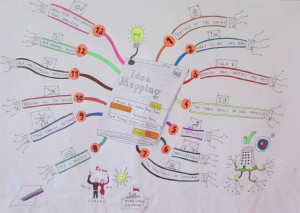 During my November 2013 trip to teach a workshop in Poland I was fortunate to spend an evening at the home of Wojtek and Ania Korsak (Owners of Explorer Consulting). They surprised me with this gift of a hand drawn Idea Map of my book titled Idea Mapping. A great time was had by all and you can see a bit of the crazy night on Wojtek’s Facebook page.
During my November 2013 trip to teach a workshop in Poland I was fortunate to spend an evening at the home of Wojtek and Ania Korsak (Owners of Explorer Consulting). They surprised me with this gift of a hand drawn Idea Map of my book titled Idea Mapping. A great time was had by all and you can see a bit of the crazy night on Wojtek’s Facebook page.
Idea Maps 446-447 from Red Deer College Electrical Apprentice Students
7 Jan 2014 Author: Jamie Nast In: Idea Mapping Example, Idea Mapping Workshops, Mind Mapping Examples, Studying for Exams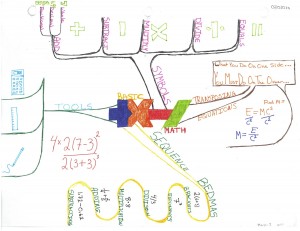
 These idea maps are from another one of Scott Letwin’s students (Zimmer) who just completed his first semester of an Electrical Apprenticeship at Red Deer College. Zimmer’s idea maps were on the topics of Basic Math and Composition of Matter.
These idea maps are from another one of Scott Letwin’s students (Zimmer) who just completed his first semester of an Electrical Apprenticeship at Red Deer College. Zimmer’s idea maps were on the topics of Basic Math and Composition of Matter.
I first introduced Scott in my December 4, 2013 posting as he was preparing to attend my 2-day Idea Mapping Workshop in Palm Beach, FL. He was featured in a couple of my other postings after that, but this is the second posting featuring the work he has been doing with his apprenticeship students. My January 2, 2014 posting provides the background on Letwin’s highly successful approach with his students.
Scott’s full story is featured in the January 2014 Using Mind Maps Magazine and available at the AppStore.
Idea Maps 444-445 from Red Deer College Electrical Apprentice Students
2 Jan 2014 Author: Jamie Nast In: Idea Mapping Example, Mind Mapping Examples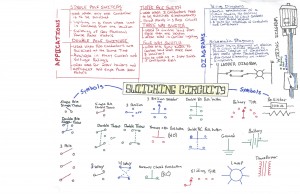
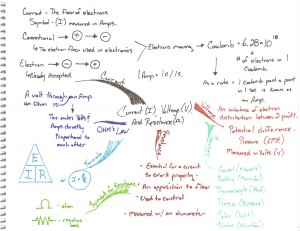 Scott Letwin is an Electrical Apprenticeship Instructor at Red Deer College in Red Deer, Alberta CANADA. I recently met him when he attended my Idea Mapping Workshop in Palm Beach, FL December 11-12, 2013.
Scott Letwin is an Electrical Apprenticeship Instructor at Red Deer College in Red Deer, Alberta CANADA. I recently met him when he attended my Idea Mapping Workshop in Palm Beach, FL December 11-12, 2013.
He has been at Red Deer College for eight years and has been successfully teaching idea mapping to his students and having a profound impact on their retention of the material in addition to providing them with a tool they can use for a lifetime.
These idea maps are from his students (Cody & Wagoner) that just completed their first semester at Red Deer College. Cody’s idea map was on the topic of switching circuits and Wagoner’s map was about Current, Voltage & Resistance. Thanks for being such an inspirational leader Scott!
Scott’s full story is featured in the January 2014 Using Mind Maps Magazine and available at the AppStore.
Idea Maps 442-443. 7 Habits of Highly Effective People
27 Dec 2013 Author: Jamie Nast In: Idea Mapping Example, Idea Mapping Workshops, Mind Mapping ExamplesThese two Idea Maps from Howard Veit and Scott Letwin summarize Covey’s 7 Habits. These examples were created during my December 2013 Idea Mapping Workshop in Palm Beach, FL using mind mapping software.
They were developed during an activity whose purpose is to give course participants an opportunity to summarize an article and boil down habits like “Seek First to Understand Then to be Understood” into 1-2 key words that resonate for the creator.
You will find many more Idea Mapping examples from this 7 Habits article on this blog. Every map is different despite the fact that they came from the same article. This proves that how they are organized, the level of detail, the amount and type of imagery, and the decision about whether to use software or hand-draw — these are all personal choices based on the purpose for creating the Idea Map and how familiar the mapper is with the material.
If you want to see the many different Idea Maps from this article, search on “7 Habits” or “Covey” and enjoy the variety!
Idea Mapping Blog
The purpose of this blog is to share idea mapping examples and related learning from my Idea Mapping, Memory, Speed Reading, and Certification Workshops. This blog is dedicated to my Certified Idea Mapping Instructors, my clients, Mind Mapping and Idea Mapping practitioners around the globe.
![[Ask]](http://ideamapping.ideamappingsuccess.com/IdeaMappingBlogs/wp-content/plugins/bookmarkify/ask.png)
![[del.icio.us]](http://ideamapping.ideamappingsuccess.com/IdeaMappingBlogs/wp-content/plugins/bookmarkify/delicious.png)
![[Digg]](http://ideamapping.ideamappingsuccess.com/IdeaMappingBlogs/wp-content/plugins/bookmarkify/digg.png)
![[Facebook]](http://ideamapping.ideamappingsuccess.com/IdeaMappingBlogs/wp-content/plugins/bookmarkify/facebook.png)
![[Google]](http://ideamapping.ideamappingsuccess.com/IdeaMappingBlogs/wp-content/plugins/bookmarkify/google.png)
![[MySpace]](http://ideamapping.ideamappingsuccess.com/IdeaMappingBlogs/wp-content/plugins/bookmarkify/myspace.png)
![[Slashdot]](http://ideamapping.ideamappingsuccess.com/IdeaMappingBlogs/wp-content/plugins/bookmarkify/slashdot.png)
![[Sphinn]](http://ideamapping.ideamappingsuccess.com/IdeaMappingBlogs/wp-content/plugins/bookmarkify/sphinn.png)
![[StumbleUpon]](http://ideamapping.ideamappingsuccess.com/IdeaMappingBlogs/wp-content/plugins/bookmarkify/stumbleupon.png)
![[Technorati]](http://ideamapping.ideamappingsuccess.com/IdeaMappingBlogs/wp-content/plugins/bookmarkify/technorati.png)
![[ThisNext]](http://ideamapping.ideamappingsuccess.com/IdeaMappingBlogs/wp-content/plugins/bookmarkify/thisnext.png)
![[Twitter]](http://ideamapping.ideamappingsuccess.com/IdeaMappingBlogs/wp-content/plugins/bookmarkify/twitter.png)
![[Webride]](http://ideamapping.ideamappingsuccess.com/IdeaMappingBlogs/wp-content/plugins/bookmarkify/webride.png)
![[Email]](http://ideamapping.ideamappingsuccess.com/IdeaMappingBlogs/wp-content/plugins/bookmarkify/email.png)

